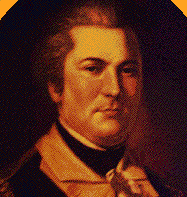John Hazelwood

Hazelwood, John (1726-1800) Naval Officer: It is not known when Hazelwood settled in America. He was born in England and served as a captain in the merchant service, sailing between London and Philadelphia, for several years, and in 1772 became one of the founders of the St. George society in the latter city. He was appointed superintendent of fire vessels in December of 1775, and was promoted to the post of commodore in the Pennsylvania navy in October 1776. Hazelwood was entrusted with the full "command of the naval force of the state" in September 1777. Afterwards, the continental vessels in the Delaware river were put under his command. In July 1776, he was one of the three men that were sent by the Council of Safety of Pennsylvania to Poughkeepsie, NY, to devise plans with the secret committee there for obstructing by means of fire-ships the enemy's navigation of the North River. For services rendered on this mission, a convention of the representatives of New York voted him the thanks of the body and the sum of £300. According to a letter of Col. William Bradford from 1777, Lord Howe sent Hazelwood a request that he give up the Pennsylvania fleet while Howe and his fleet were in Delaware Bay. Howe allegedly promised Hazelwood the king's pardon and kind treatment. Hazelwood refused the offer, and notified Howe that he would "defend the fleet to the last." Later, Hazelwood was appointed one of the "commissioners of purchase" in Philadelphia. Charles Wilson Peale. artist and patriot, thought Hazelwood worthy as a subject for his collection of portraits of American heroes, and the painting was purchased by the city of Philadelphia. The portrait, shown here, was placed in Independence Hall.
 >
>